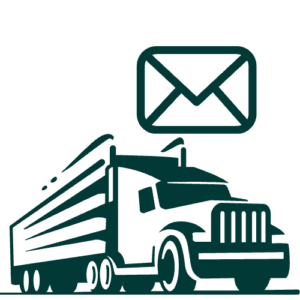Owner-Operator Expenses: Budgeting For The Solo Trucker
There’s a lot more to running a trucking company than hauling freight. Owner-operators are in the unique position of being boss and employee in one. That means your day doesn’t end when the load is delivered. You also have to handle the office stuff: filings and registrations and bookkeeping and more. Most importantly, you must track income and expenses.
Income is simple: How much are you getting paid? You can look at monthly income or annual income or the bills that got paid this week. If it’s money flowing into your bank account, it’s income.
Expenses are more interesting. There are lots of them, and they interact with one another in strange ways. For example, you might buy diesel fuel additives. That’s an expense, but it should drive up your fuel efficiency, which in turn diminishes your total fuel expenditure. Does the additive ultimately save or cost money? The only way to know is to track the numbers.
To make the decisions that improve your profit margins, you need a clear view of your expenses. That requires a budgeting spreadsheet. So fire up Excel or Google Sheets and get ready for some serious data entry. Below we cover the key owner-operator expenses every small carrier should track.
Creating Our Owner-Operator Expenses Model
It’s impossible to say exactly how much you should pay for each of these expenses. Every business is different, and costs keep changing (just look at fuel!) But to give you a general idea about your expense budget, we started with a fair set of assumptions for an owner-operator trucking business at the start of 2023. Unless otherwise noted, these figures assume an annual timeframe.
- Dry Van Only, No Certifications
- Average Truck Fuel Efficiency: 7 miles per gallon
- Average Diesel Cost: $4.00 per gallon
- Working Hours: 5 Days a Week, 49 Weeks per Year
- Loaded Miles: 440 per day, 2,200 per week
- Incoming Revenue: $5,000 per week
- Owner-Operator’s Salary: $49,000 per year
- Annual Profit Margin: 15%
Note that this model assumes you’re paying yourself a salary, rather than passing revenue through the company right into your pocket—letting profits “fall to the bottom,” as your accountant might say. Either approach is perfectly valid, but we’re assuming you prefer the steady income of the salary system.
With that foundation for our model, let’s get into the details about truck expenses and other operating costs. First, though, we’ll answer the most important question in the business.
How much does it cost to be an owner-operator?
Based on our model (which we’ll describe in detail below), a solo trucker’s operating costs should be about $1.80 per mile. If your business is similar to the one we imagine, a rate of $1.80 will only cover operating costs. You’ll need to charge more to turn a profit.
As we go through our list of owner-operator expenses below, we’ll list the cost estimates that add up to our figure of $1.80 per mile. This is only a model; your numbers probably won’t match ours, and that’s okay. It’s very possible to run a profitable trucking business with higher or lower operating costs than we find here. Still, we hope this example helps you build your own budgeting systems.
Truck Expenses And Operating Costs For Owner Operators
We recommend separating expenses into two categories: fixed costs and variable costs. We like that division because it simplifies spreadsheet maintenance. Fixed costs don’t change. You may pay them annually, or they might be monthly expenses. Either way, they’re predictable and static.
Variable costs are always changing, week to week or even day to day. They’ll require a lot more data entry on your part. So it helps to put them in a separate section of your spreadsheet. With this two-fold structure, here are the specific categories and line items of expenses every owner operator should track.
Fixed Costs
1. Equipment
Assuming you own one truck and one trailer, you’ll probably make monthly loan payments on both. Even if your equipment is paid off, you’ll pay for registration and permitting every year. According to our model, you can expect to budget about 17% of all expenses for equipment costs. That adds up to about 40 cents per mile.
2. Insurance
Line items under this category include general liability, physical damage, and trailer insurance. You might pay these monthly, quarterly, or annually, but the cost should be static. For a first-year owner-operator, our sources estimate insurance costs at:
- Truck Insurance, Liability: $6000 per year
- Truck Insurance, Physical Damage: $6,000 per year
- Trailer Insurance: $2,000 per year
- Cargo Insurance: Varies according to cargo value and coverage limit
Given the wide variance in cargo insurance costs, we haven’t factored it into this model; but most sources list a price range between $400 and $1,800 per year for that, too.
Whatever you pay for insurance, the cost should diminish as your business matures. But if you’re just starting out, expect to pay somewhere in the neighborhood of $15,000 per year for insurance. In our model, that’s equivalent to 13 cents per mile, or about 6% of your total expense budget. (Just remember: Your exact numbers may differ from our model, which we offer only as a blueprint for how to approach budgeting for your business.)
3. Your Salary
In 2021, median pay for a truck driver was $48,310. Our model assumes you pay yourself just over this median rate—but don’t forget we also built a 15% profit margin into the example. If your business follows our numbers perfectly, you’ll also build value in your company accounts by the end of the year. What you do with the profit is up to you; you can reinvest it in your business or give yourself a hefty bonus. The point is, you could take home much more than our salary example suggests.
Our model assumes a self-paid salary of $49,000 per year, or $1,000 per week for 49 weeks (assuming you give yourself three weeks off every year). That adds up to about 47 cents per mile, or roughly 20% of your budget.
4. Property And Yards
You have to store your rig somewhere. If you own trailers, you have to store those, too. These yards cost rent money every month, or, if you own a location, taxes, insurance, and upkeep. However, given the wide variance in real estate costs from one region to the next, this expense is hard to model. Besides, many owner operators park at home. So our model assumes a cost of $0 for property and yards; just be sure to take these expenses into account if your situation is different.
5. Back-office Tools And Services
Few businesses these days operate without software. At the absolute minimum, you’ll probably use an accounting system like Quickbooks ($55/month for Quickbooks Online Essentials). That’s a yearly payout of $660, which adds less than 1 cent per mile to your total costs of operation. This expense represents less than 1% of your total expense budget.
6. Compliance
Electronic logging devices (ELDs) charge annual fees, often around $360; so do weigh station/tolling programs like PrePass, at a similar cost. You must also maintain and submit a Driver Qualification File (DQF) to the Federal Motor Carrier Safety Administration; that costs around $20 per year.
With these and other compliance expenses—including drug and alcohol testing administrators or consortiums—assume you’ll pay under 1 cent per mile, or less than 1% of your budget.
7. Heavy Vehicle Use Tax
Lots of the taxes you’ll pay will fall under our variable costs category. They’ll be percentages of your income, which will change from year to year. Not so the heavy use tax. This is a fixed, annual payment ranging between $100 and $550 (as of 2023), depending on the taxable gross weight of your vehicle. This is a relatively small tax, amounting to less than 1 cent per mile and less than 1% of your expense budget. But it’s worth keeping track of, to remind you to pay it, if nothing else!
That’s it for the fixed costs. Note that, for the sake of our total cost of operation target of $1.80, we added the costs of compliance, office tools and services, and the heavy use tax to reach a total value of 1 cent per mile. They each represent just a fraction of a cent, so this seemed like a justified simplification. Now we’ll get into the expenses that aren’t so predictable.
Variable Costs
1. Fuel
This is the big one. While the amount of fuel you’ll buy will change from week to week, and the price will fluctuate throughout the year, fuel often gobbles up around 25% of a truck driver’s operating budget. At an average cost of $4.00 per gallon, our model finds a per-mile cost of 57 cents for diesel and diesel exhaust fluid (DEF).
2. Taxes
Along with the heavy use tax, the owner-operator is likely to pay at least two taxes: fuel tax and a business tax. (If you operate in Oregon, New Mexico, New York, or Kentucky, you’ll also owe state-specific heavy-use and fuel taxes.)
Depending on the structure of your business, you’ll pay either the federal corporate tax rate or the self-employment tax. This will fluctuate with tax law and your annual income; for simplicity’s sake, we won’t consider this cost here. It’s based on (and paid out of) profit. These expenses consider costs before figuring profit.
However, you should budget some amount for your international fuel tax agreement (IFTA) taxes, paid quarterly. Our model is fairly conservative on IFTA taxes; it budgets $1,200 per year for IFTA, which still adds up to less than 1% of expenses.
Depending on your business structure and how you pay yourself, however, you may also have to pay the Federal Insurance Contributions Act (FICA) tax. Our model assumes you do, and estimates a cost of around $4,000 annually, almost 2% of the budget. Together, IFTA and FICA taxes added up to about 5 cents per mile in our model.
3. Maintenance
Older trucks tend to require more expensive upkeep. Newer trucks have higher price tags, but may cost less to maintain. Either way, you can always save money by learning to do simple maintenance tasks on your own, rather than paying top dollar at a truck stop. Just to be safe, we kept our maintenance estimate fairly conservative, budgeting 5% of expenses, for a total cost of 12 cents per mile.
4. Miscellaneous Driving Expenses
You might have to pay for parking. You may need a small tool, or a fuel additive, or a meal on the company dime. And while you can deduct these business expenses from your taxable income—including everything from food to gloves to job-related accessories—you need cash on hand to pay for them first. These variable costs are hard to predict, but it’s probably safe to set aside about 2% of your budget, or 5 cents per mile, for these unpredictable costs.
5. Finance Costs
You might pay interest on a bank loan. You may need to hire accountants or legal services to help manage your money. While our model doesn’t assume any costs for financing, if you’re paying for money, you should track that expense.
And it’s often a good business decision to pay a small amount for access to capital. In the trucking industry, brokers and shippers often take weeks or months to pay their invoices. Meanwhile, the owner operator’s expenses must be paid today.
If you find yourself in that scenario, don’t worry. Get your invoices paid, same-day, with simple factoring services from Bobtail. We’ve done away with the hidden fees, and complex processes. Simply upload an invoice through the Bobtail app and get paid.

Article By
Keep Learning












